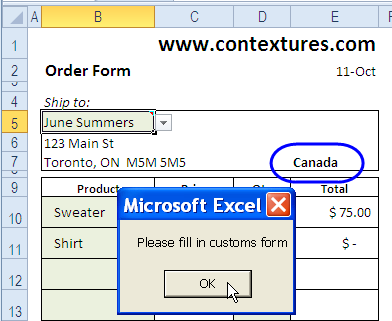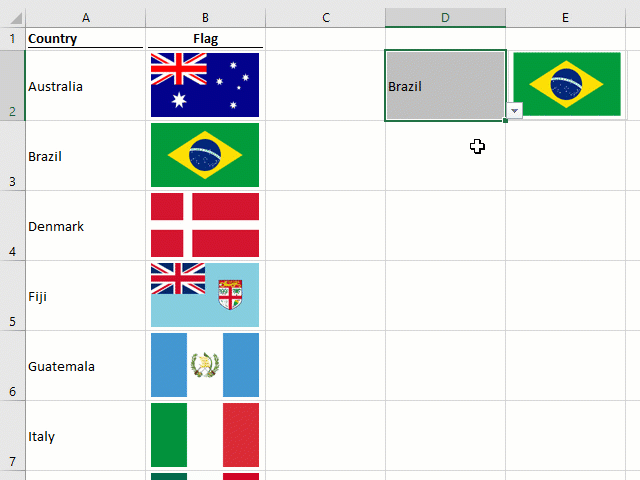

When working with Excel formulas, notation is (in broad terms) the system you use to represent a cell reference. I provide an introduction to the R1C1 notation in this section.įirst, let me explain what I mean by “notation”: In order to understand the rest of this Excel tutorial, and how the FormulaR1C1 property may help you when working with VBA, having a good understanding of R1C1 notation is useful. Now, let's start by taking a look at… R1C1-Style And A1-Style Notation: A Basic Introduction Books Referenced In This Excel Tutorial.

Macros That Rely On Relative References: Avoid This Error.Setting The Formula Of A Cell Range To Create A Table With The Range.Formula Property.Range.FormulaR1C1 Property Example: Setting The Formula Of A Cell Range To Create A Table.Excel Formulas And Language Considerations.Range.FormulaR1C1Local Property And Language Considerations.Range.FormulaR1C1: Reading The Property.Range.FormulaR1C1: Basic Description And Purpose.
EXCEL VBA ON CELL CHANGE FULL


Notice how the macro recorder uses the FormulaR1C1 property every single time.Īs explained in Excel 2016 Power Programming with VBA and by Bob Phillips at, you normally use the Range.Value property for purposes of entering a value in a cell. I recorded my actions while (i) entering numbers 1 through 5 in cells B5 to B9 and (ii) selecting cell B10 at the end. To give you an idea, I used the macro recorder for purposes of creating the following sample macro (Enter_Value_FormulaR1C1). This is because, as explained at Stack Overflow, the macro recorder constantly uses FormulaR1C1.įor example, even though you normally use the Range.Value property for purposes of entering a value in a cell, the macro recorder uses the Range.FormulaR1C1 property for those same purposes. If you've used the macro recorder, you're probably familiar with both R1C1-style notation and the FormulaR1C1 property.


 0 kommentar(er)
0 kommentar(er)
